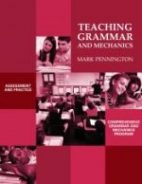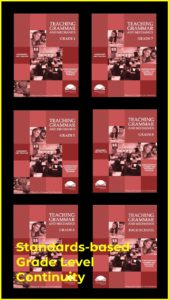Academic Language Words

Comprehensive Vocabulary
Teaching Academic Language Words is essential to improving reading comprehension and writing sophistication.
The principal authors of the Common Core State Standards have rightly criticized the dumbing-down of reading text in Appendix A of the Common Core document. Citing the research detailed in the 2006 ACT, Inc., report titled Reading Between the Lines that high school student scores in reading comprehension have dropped over recent years, the authors pinpoint two primary reasons for this trend. First, the level of K-12 text complexity has decreased. Second, too many teachers are reading novels out loud and explicating line by line such that their students have little practice in independently accessing meaning from text.
Of course, pinpointing text complexity as a problem begs the question of just what constitutes complex text. To their credit, the authors do a nice job evaluating reading level formulas and analyzing the semantic and syntactic features that contribute to reading levels. Although they spend some time discussing the impact of syllable number and word length, the authors fail to adequately bullet-point the chief variable in text complexity: the words themselves. To be fair, the authors certainly do emphasize the importance of vocabulary throughout the rest of the Common Core document.
So, which words make reading text complex? And, if we know what they are, how can we teach them most effectively? I try to answer the latter question in a complementary article, How to Teach the Common Core Vocabulary Standards, but following is part of my answer to the first question.
To teach the types of words that are included in complex reading text, the Common Core document lists its primary Vocabulary Standards in the English Language Arts Language Strand. The Standards focus on these kinds of words: multiple meaning words (L.4.a.), words with Greek and Latin roots and affixes (L.4.a.), figures of speech (L.5.a.), words with special relationships (L.5.b.), words with connotative meanings (L.5.c.), and academic language words (L.6.0).
So as not to chew on too much for one article, let’s focus on the academic language words (L.6.0).
These Tier 2 (generalizable) and Tier 3 (domain-specific) words (Beck, McKeown, Kucan) require explicit instruction and practice in a variety of reading and writing contexts. These words are not incidental vocabulary that will naturally be acquired through “free choice” independent reading of novels. Indeed, academic language words show up most of the time in complex expository text.
I can hear English language-arts teachers thinking… “Isn’t the Common Core all about sharing the literacy load? Shouldn’t history and science handle this complex expository text?”
Yes, the Common Core authors view literacy development as a mutual responsibility of all educational stakeholders. Yes, history, science, and technology teachers need to teach domain-specific academic vocabulary. However, there is a difference between academic language and academic vocabulary. The latter is subject/content specific; the former is not. For example, tectonic plates will appear frequently in science textbooks, but rarely elsewhere. However, the word analyze will appear frequently in science textbooks and frequently in all other expository text. It’s the academic language that English-language arts teachers need to teach.
So, this is why the Common Core State Standards has begun the “Great Shift” from narrative to expository reading. Reading more challenging expository novels, articles, documents, reports, etc. will certainly help students implicitly learn much academic language; however, academic language word lists coupled with meaningful instruction do have their place. So, which word lists make sense?
Common Core Academic Language Words
…
Dr. Averil Coxhead, senior lecturer at the Victoria University of Wellington School of Linguistics and Applied Language Studies developed and evaluated The Academic Word List (AWL) for her MA thesis. The list has 570 word families which were selected according to certain criteria:
- The word families must occur in over half of the 28 academic subject areas. “Just over 94% of the words in the AWL occur in 20 or more subject areas. This principle ensures that the words in the AWL are useful for all learners, no matter what their area of study or what combination of subjects they take at tertiary level.”
- “The AWL families had to occur over 100 times in the 3,500,000 word Academic Corpus in order to be considered for inclusion in the list. This principle ensures that the words will be met a reasonable number of times in academic texts.” The academic corpus refers to a computer-generated list of most-frequently occurring academic words.
- “The AWL families had to occur a minimum of 10 times in each faculty of the Academic Corpus to be considered for inclusion in the list. This principle ensures that the vocabulary is useful for all learners.”
Words Excluded From the Academic Word List
- “Words occurring in the first 2,000 words of English.”
- “Narrow range words. Words which occurred in fewer than 4 faculty sections of the Academic Corpus or which occurred in fewer than 15 of the 28 subject areas of the Academic Corpus were excluded because they had narrow range. Technical or specialist words often have narrow range and were excluded on this basis.”
- “Proper nouns. The names of places, people, countries, for example, New Zealand, Jim Bolger and Wellington were excluded from the list.”
- “Latin forms. Some of the most common Latin forms in the Academic Corpus were et al, etc, ie, and ibid.” http://www.victoria.ac.nz/lals/resources/academicwordlist/information
The Academic Word list has been ordered into lists by frequency of use. Why not teach the academic language words that appear most often in academic text?
*****
For full-year vocabulary programs which include multiple meaning words (L.4.a.), Greek and Latin morphology with Morphology Walls (L.4.a.), figures of speech (L.5.a.), words with special relationships (L.5.b.), words with connotative meanings (L.5.c.), and academic language words (L.6.0), check out the assessment-based grades 4, 5, 6, 7, and 8 Comprehensive Vocabulary.
Get the Grades 4,5,6,7,8 Vocabulary Sequence of Instruction FREE Resource:
![]()
Get the Greek and Latin Morphology Walls FREE Resource:
![]()
Get the Diagnostic Academic Language Assessment FREE Resource:
![]()
Get the Grade 8 Vocabulary Worksheets FREE Resource:
![]()
Literacy Centers, Reading, Spelling/Vocabulary, Study Skills



 Last Wednesday, one of my favorite eighth grade English-language Arts colleagues burst into my fifth period seventh grade class. Herding ten of my previous students through the door to stand in front of my class, my clearly frustrated friend said, “My students can’t identify is as a linking verb in this practice sentence. I asked which students had you last year, and here they are.”
Last Wednesday, one of my favorite eighth grade English-language Arts colleagues burst into my fifth period seventh grade class. Herding ten of my previous students through the door to stand in front of my class, my clearly frustrated friend said, “My students can’t identify is as a linking verb in this practice sentence. I asked which students had you last year, and here they are.”


